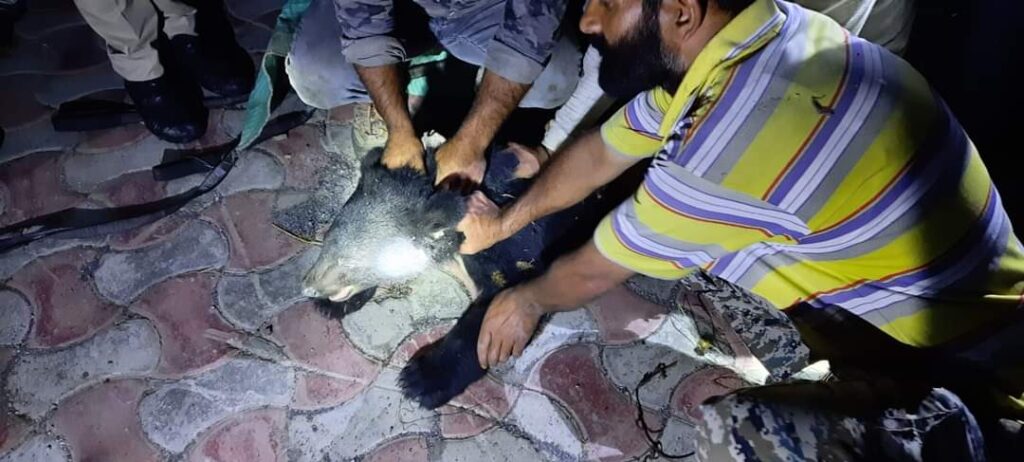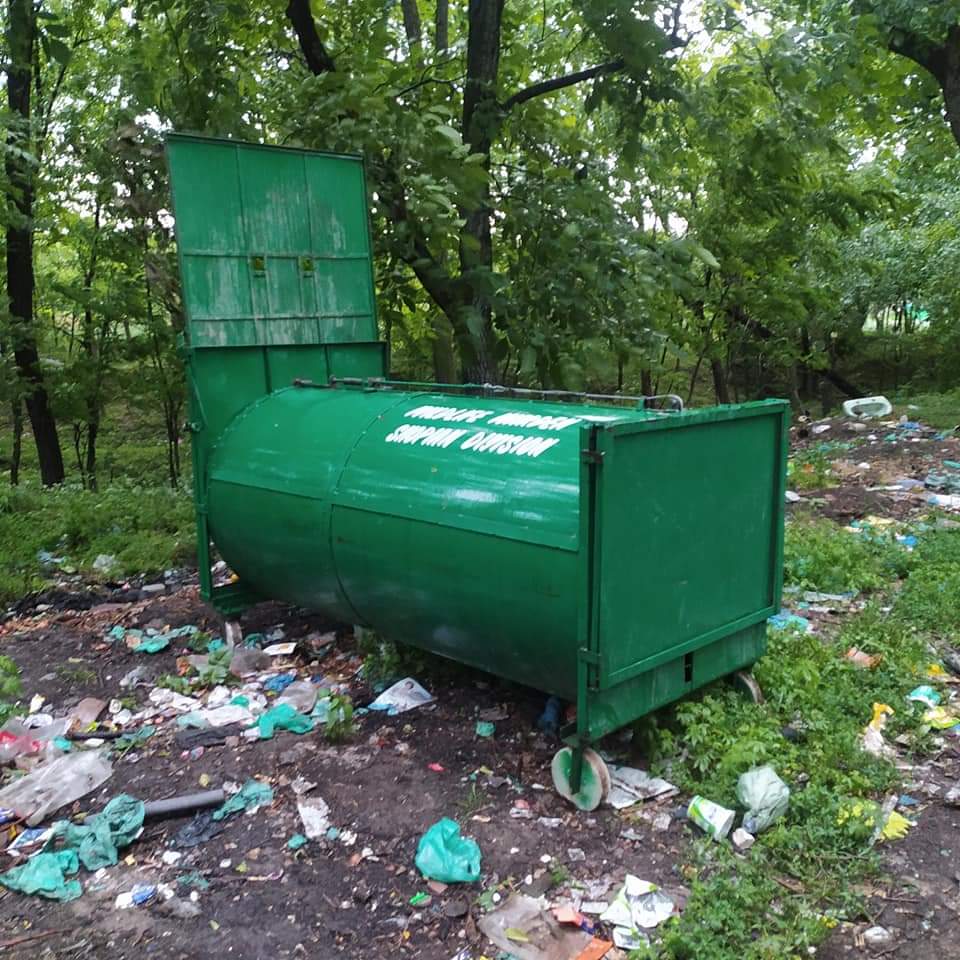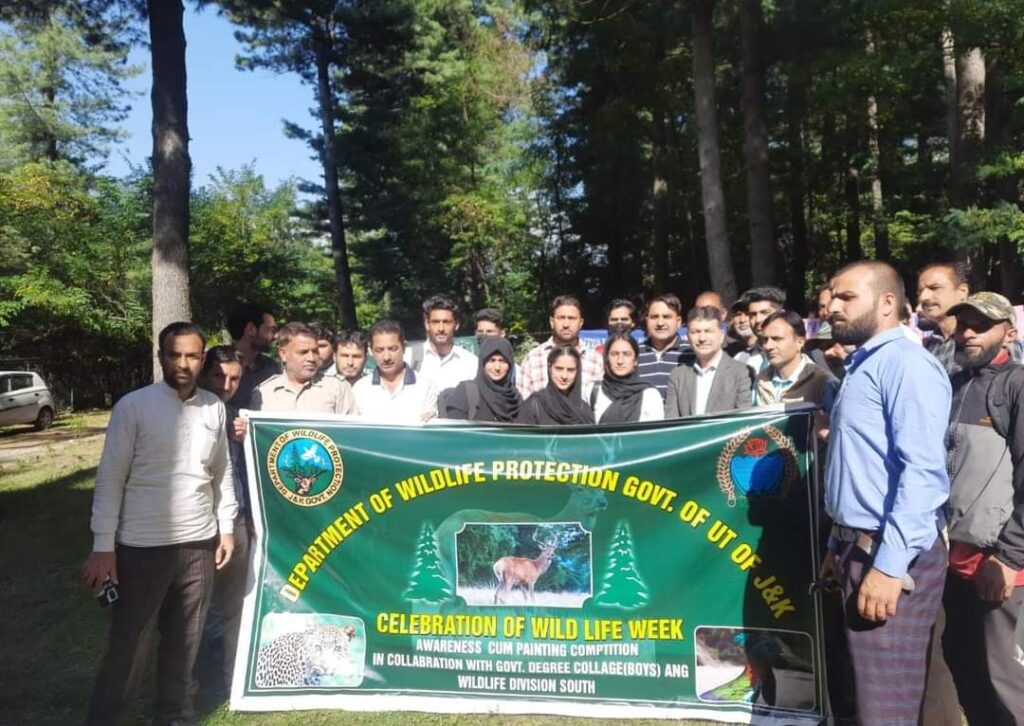Unveiling the reasons behind wild animals venturing into residential areas in J&K and the clash with humans, exploring the journey from prey scarcity to dangerous encounters
By Tauheed Ahmad
Human-animal conflict is an ongoing issue that affects both humans and animals globally and Jammu and Kashmir too is facing the issue with the growing cases of human-animal conflict every year. Kashmir valley, being one of the most bio-diverse regions of the world– has maximum chances of threat to the continued survival of different wildlife species and humans. SURVIVAL BATTLE OF SPECIES
In simple terms, Human-animals conflict refers to the interaction between wild animals and humans—resulting in a negative impact on people, animals, habitat, and resources. The growing human population overlaps with the established wildlife pockets has created a survival competition between different species and has caused greater implications to humans and animals also– where both humans and animals get killed, and injured. In some areas, dangerous predators cause massive damage to livestock, crops, and even to their property.
Increasing movement of wild animals into residential areas
‘Survival of the fittest does occur, so is true with the animals. Their movement is dependent on food resources and mating purposes, and wild animals had been using these traditional corridors to traverse through habitats to fulfill this purpose. But due to the commercialization, expansion of agricultural activities and rapid urbanization the safe movement of wild animals has got hampered,’ Samina Charoo, Research Officer of the Wildlife protection department said.

Divulging the details of the manifold increase of wild cats, Samina said that scarcity of prey base is the main cause of the rising number of wild animals venturing into residential areas, and the change is human-induced due to human intervention into forests—and this phenomenon has become a cause of conflict between humans and wild animals.
In recent times, researchers have found that wild animals have become habitual of easily accessible leftover food by humans and street dogs are the main reason for the presence of Leopards in cities, she added.
‘This food has changed their behavior also. They get easy food out–they will come and have this food’.
It has somehow changed their basic wild instinct now; earlier researchers would have never thought of Bear coming out and going into residential areas. It seems quite illogical for a researcher why would an animal leave his natural habitat and move into human habitations, she said.
Usually, animals would never come out without their cover, they are very secretive, she added.
Giving details on behavioral change among wild animals, Samina said that scientists are working on the changing behavior of wild animals and many of them believe animals behave differently when they are in their habitat and outside of their habitat.
‘The kind of food that they eat and the establishments that humans have developed and the cutting down of forests and the changes within their habitat have indeed put an adverse effect on them and forced them to move out, she added.
Changing patterns of activity
Wildcats and Bears are mostly active at dawn or dusk or at both times. But it has been observed that animals living near human habitations have developed a different pattern of activity.
It is quite astonishing that leopards come out in a daytime–that too in a place that isn’t their natural habitat, Samina informed.
Web of life – Food chain
We are living in an ecosystem, and all living things are connected, and every living creature is differently playing their role in maintaining a balanced ecosystem.
For example, the Black bear is called the gardener of the forest, it plays a significant role in facilitating habitats of various flora and fauna of the forest.
The excreta of Bears scatter undigested food carrying seeds of fruits, berries, and other plants all over the forest floor. This only phenomenon has a huge impact on the forest which is directly impacting humans too. For a balanced ecosystem, they are equally important.
‘Climate change has drastically disturbed the food chain of wild animals, including water and food, forcing animals to venture into human settlements in search of these resources. (For example, if herbivores move out of their natural habitat it can cause a depressed prey base for carnivores), Samina said.
Number of cases in the last decade
According to data from J&K’s Department of Wildlife Protection, the pattern of human-animal conflicts and deaths over the years (from 2013 to June 2023) has been uneven. There have been around 1916 incidents of Human-wildlife conflict wherein 147 people have lost their lives and 1777 were injured in the human-animal conflict in Jammu and Kashmir.
Potential solutions
The department is doing its part but as an individual, we must be very responsible in maintaining the ecosystem, the supplementation of easy prey supports the wild animal population, Samina said.
Heaps of kitchen waste lure dogs and provide them nutritional food and studies have found that nutritional food makes the female dog to produce more puppies. Interestingly; dogs are found to be easy prey for leopards, she added.

‘Understanding the impact of easy food; leopards are changing their mating patterns which are critically affecting the density of the leopard population’, she said.
The carrying capacity of our forests is limited and if the limit exceeds they will move out in search of food. This can add to the urban leopard ratio and can cause more human-animal conflict, she said.
‘We cannot teach animals to follow a pattern but we can teach ourselves to be cautious and responsible, ’ she added.
Awareness campaign
A few NGOs in collaboration with the department have carried out door-to-door campaigns to sensitize people about the dangers of human-animal conflict and encourage conservation-friendly practices, Samina said.
Preventing the human-animal conflict, the department issues do’s and don’ts via audio-visuals, and poster advisories to tell people what precautions they should take in both Urdu and Kashmiri languages, besides training local volunteers to cope with human-animal conflicts, she said.
Pertinently, a particular group from the department goes to the highlands to sensitize shepherds about the issues to avoid any untoward as they remain prone to attacks from wild animals, she added.
Admin’s focus to mitigate human-wildlife conflict
In a 4th J&K Wildlife Board meeting convened by Lieutenant Governor of J&K, Manoj Sinha called for proper utilization of natural resources, promotion of trekking routes, and strategy for effective and efficient mitigation of human-wildlife conflict.
He also directed the concerned departments for taking proactive steps to protect its habitat.
To prevent poaching, LG calls for greater coordination among the stakeholders must be ensured to dismantle the nexus of poachers, he added.
”Integrated development of wildlife habitats should be our top priority. Our efforts must focus on strengthening ecological integrity and conservation of priceless resources through people’s participation, LG said.
Ways to mitigate human-animal conflict:
For biodiversity conservation, several initiatives have been taken by the Government to preserve wildlife by establishing Natural parks, reserves, and sanctuaries to restore the natural ecological balance.
In Jammu and Kashmir, more than 20 percent of the land is under forest cover—there are 35 conservation reserves, 14 wildlife sanctuaries, and five national parks within the UTs 15912 sq km network of protected areas.
Although, these initiatives have helped a lot in preserving the natural habitat of wild animals, whereas, their number has also doubled in the past several years.
Informing about the department’s new measures, the Wildlife Warden (Technical), Suhail Ahmad Wagay said that there has been a major revamp in the department in terms of capacity building of persons and up-gradation of safety gears to carry out the rescue operations of wild animals in the J&K.

To carry out rescue operations in a tandem manner, the department has incorporated other wings of the department including (Social Forestry Department and Forest Protection Force) by involving their staff to work with the joint control room functionaries, he said.
‘The number of rescue centers doubled from the last couple of years—equipped with modern gadgets, special ambulances, and other vehicles,’ he said.
To ensure food availability within the protected areas, the department carries an enrichment drive to make food available in every season for Himalayan Bear. The drive has yielded better results to confine bear movement within their natural habitat, he said.
The growing human population and fragmentation of habitats led to the risk of human-animal conflict. To avoid this conflict we have to adopt proactive strategies and the concept of coexistence to reduce conflict and foster transformation in human attitudes, he added.
However, it has also been witnessed that protected areas have their limitations as far as the safety of wildlife is concerned, as many wild animals have been spotted outside these protected areas due to the limited hunting area. This phenomenon makes them more prone to human-animal conflict.
To mitigate the Human-animal conflict, certain proactive measures can be taken to save humans and wildlife—like the use of advanced technology to track down the movement of animals with tracking collars embedded with SMS chips which automatically send advisory/warning texts to nearby residents of animal movements.
Several countries have constructed special wildlife corridors to provide wild animals safe passage to their preserved areas—and it proved effective to conserve wildlife and avoid conflict.


Comments are closed.